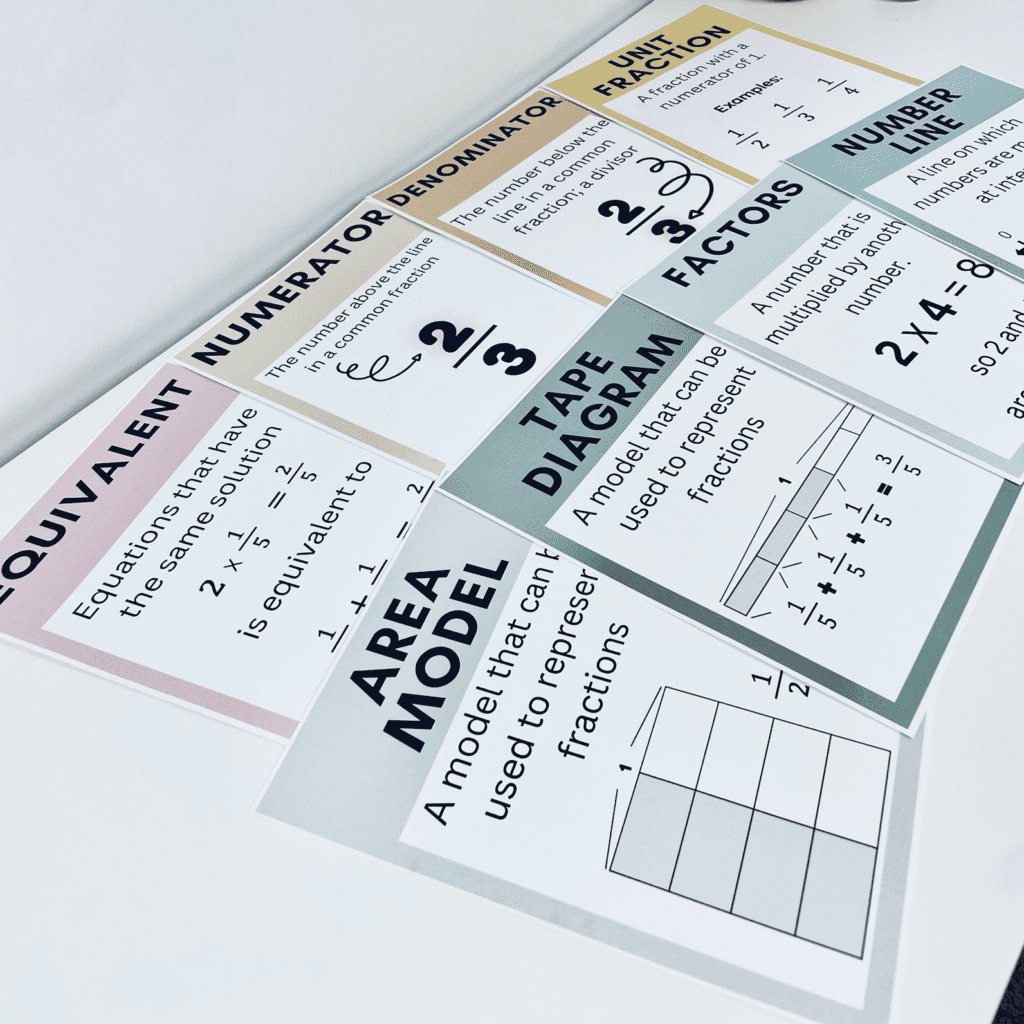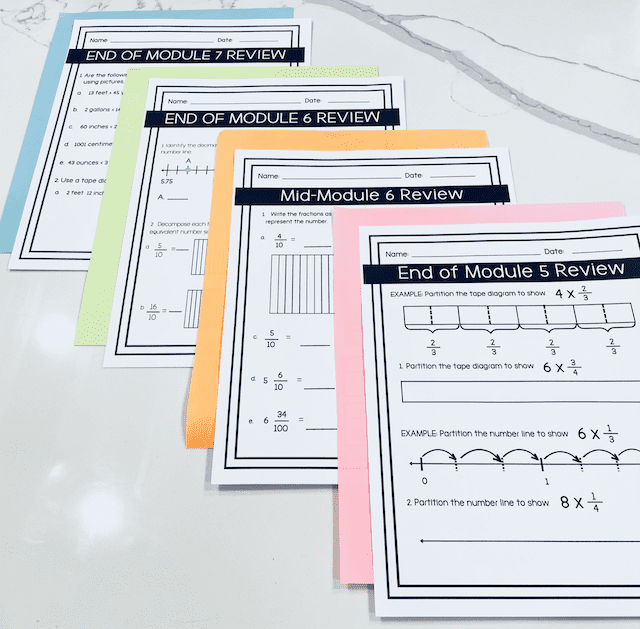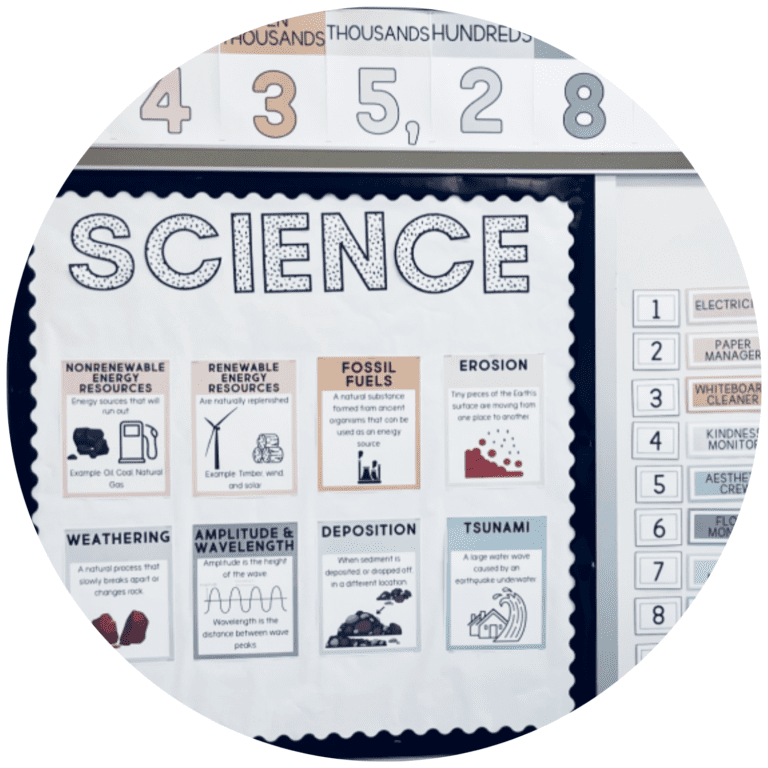Instructional scaffolding is a teaching approach that provides support to students as they learn new concepts and skills. The goal of instructional scaffolding is to provide learners with the support they need to learn a new skill or concept, while gradually reducing that support as the learner becomes more proficient. Scaffolding can take many forms, including visual aids, hands-on activities, and step-by-step instructions. In this blog post, we will explore how scaffolding can be used in a math classroom.
Scaffolding by Pre-teaching Vocabulary
To start with, one effective way to scaffold is to introduce pre-teach vocabulary using posters. Vocabulary posters serve as a graphic organizer that helps students understand new words in a visual way. These posters can be used to introduce new terms or concepts before a lesson, as well as to reinforce and review vocabulary throughout the module. They can also be used as a reference tool during class and when students are working on homework or assignments. They can also be used as a reference throughout the learning process. To make it easier for you to get started with math posters, I have designed a set of math posters specifically for grades 2, 3, 4, and 5 that align with the curriculum. These posters are colorful, visually appealing, and easy to read, making them the perfect tool to help your students learn and understand math vocabulary. By incorporating these posters into your math instruction, you can help your students to build a strong foundation of understanding and succeed in math.

Instructional Scaffolding Using “I Do, We Do, You Do”
The teaching strategy “I Do, We Do, You Do” is a commonly used instructional scaffolding approach that aims to gradually shift responsibility from the teacher to the student as they learn a new skill or concept. Modeling a problem “I Do” is a great way to start instructional scaffolding as it shows students how to apply the concepts they are learning. After the problem is modeled, allowing students to work in pairs “We Do” can be very beneficial. Think-pair-share is an effective way to allow students to learn with peer support. If you have the opportunity to add a game element, even better! Gamification can make learning fun and engaging, especially for active students, and can help them push past frustration barriers.
After the students have had the chance to work with a partner, they should be given the opportunity to try a problem on their own “You Do”. This allows them to practice applying the concepts they have learned with minimal guidance. For advanced students, enrichment packets can be a great way to challenge them further. These packets can give the higher-level students something to do while the teacher spends one-on-one time with students who may be struggling. Check out my year-long 4th grade math enrichment bundle if you’re interested in engaging and fun activities for your advanced students.

Round Out Your Instructional Scaffolding Using Test Reviews
Test reviews are a powerful tool for boosting student performance and improving long-term retention of content. In fact, research has shown that they are one of the most effective ways to help students prepare for high-stakes tests. As an extension of “You Do”, you can scaffold the test-taking process. Low-stakes testing before the actual test is a fantastic way to ease students into the experience. Furthermore, test reviews are especially helpful for students who tend to be more anxious test takers.
A crucial component of successful test reviews is providing detailed answer sheets that allow students to go back and identify their mistakes before the real test. During these review periods, it’s also essential to encourage metacognition. By reflecting on their performance and identifying areas where they need to improve, students can develop a deeper understanding of their own learning process, leading to greater self-awareness and confidence. If you’re looking for a comprehensive test review bundle that aligns with the Common Core curriculum, look no further than my year-long test review bundle for 4th grade. With detailed answer sheets and engaging problems, this bundle is designed to help students master concepts before test-taking.

In conclusion, instructional scaffolding is a crucial teaching approach that can help students succeed in math and other subjects. Whether through pre-teaching vocabulary with math posters, using the “I do, we do, you do” strategy, or incorporating test reviews, scaffolding can provide the support students need to learn and grow. By gradually reducing support as students become more proficient, instructional scaffolding can help build confidence and independence, allowing students to succeed both in the classroom and beyond. So, if you want to help your students thrive in math, consider incorporating these instructional scaffolding strategies into your teaching approach today using my 4th Grade Mega Bundle, which includes year-long math posters, test reviews, and enrichment.





